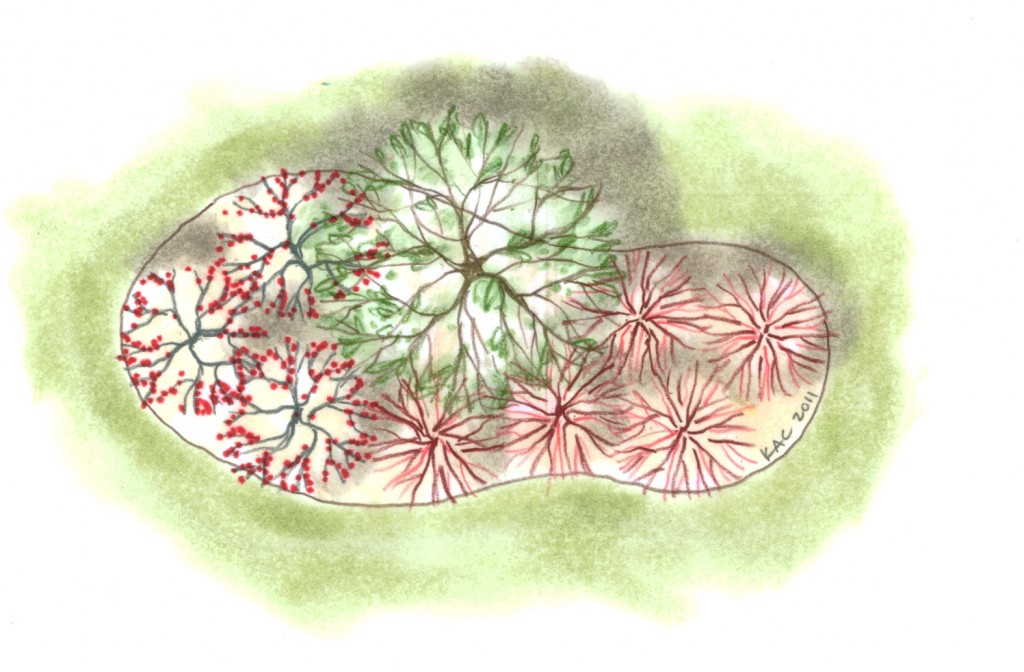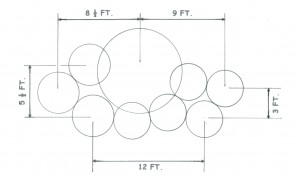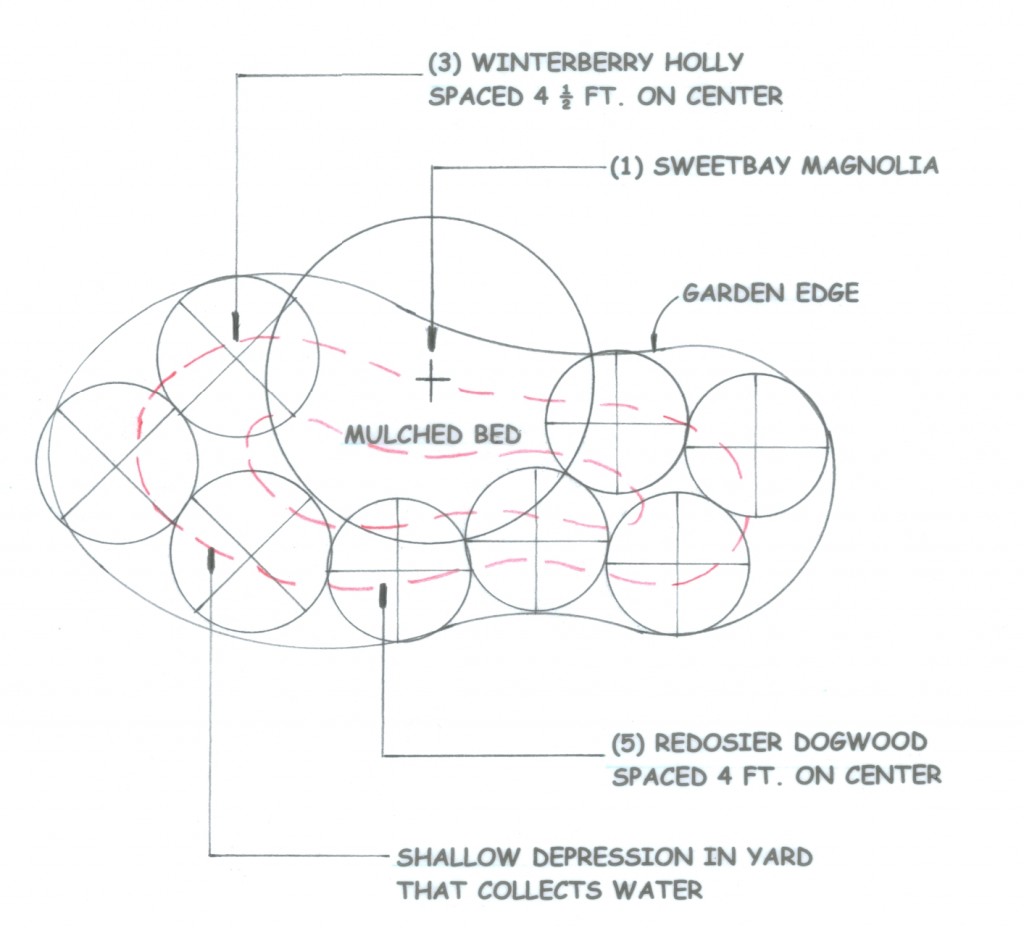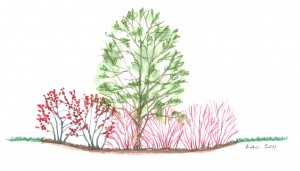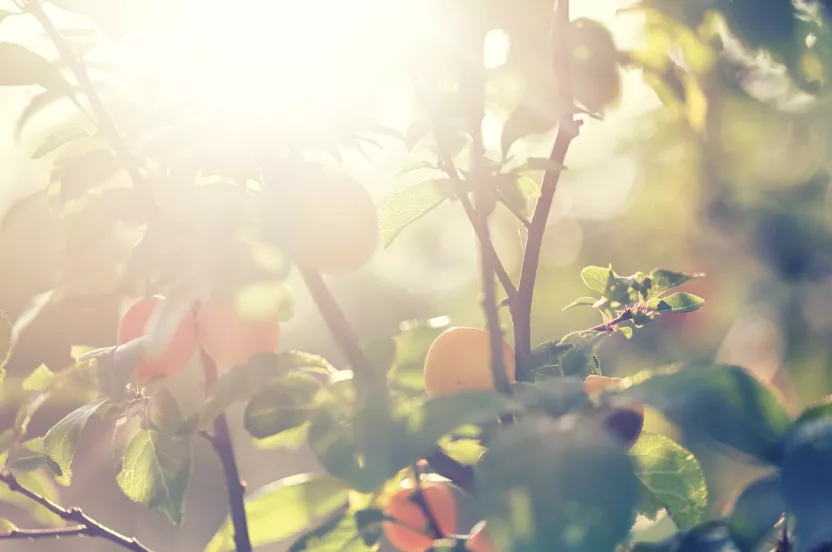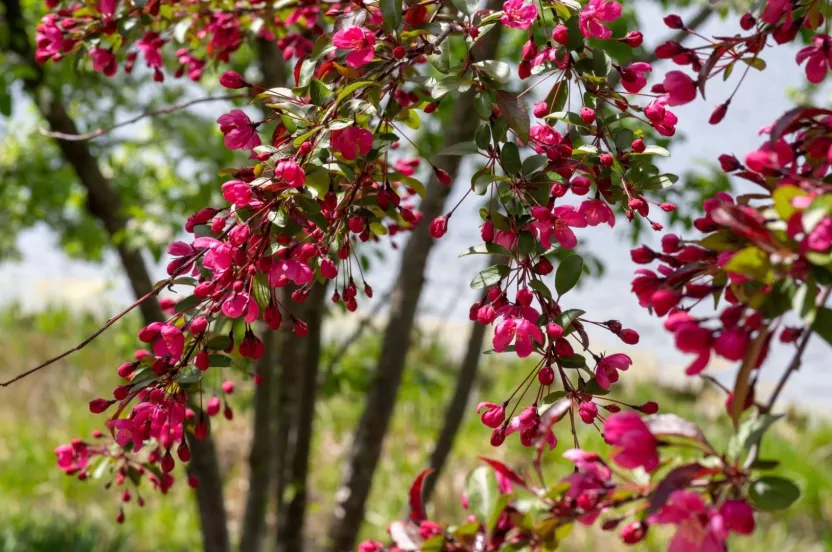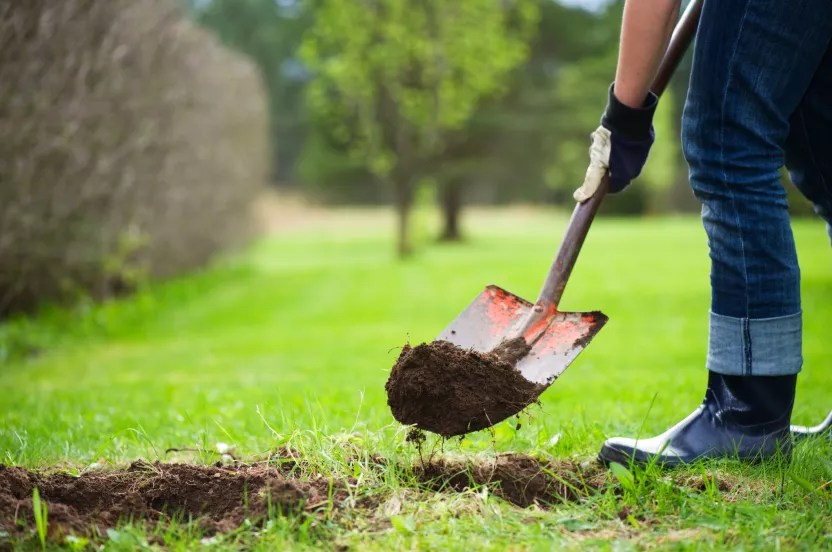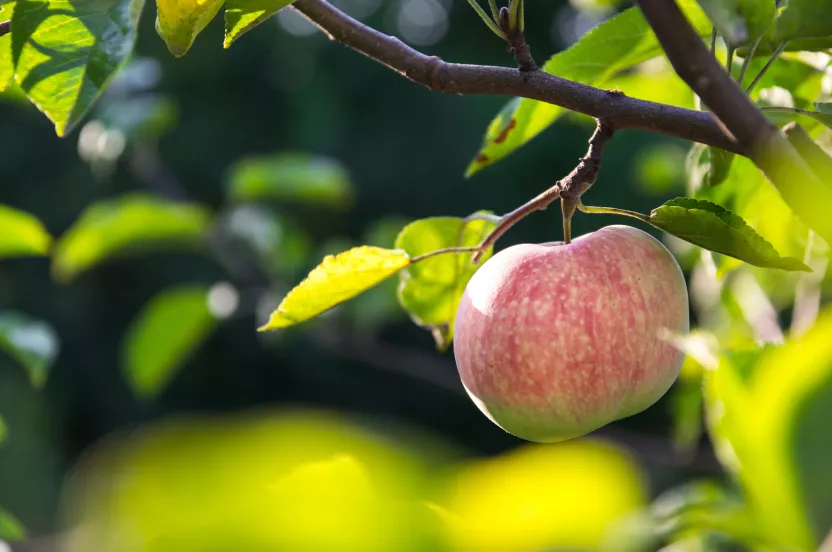The Arbor Day Foundation is pledging 10 million trees to areas impacted by hurricanes Helene, Milton Help us replant
Tree and Shrub Rain Garden Design
Turn a moist or poorly drained area of your yard into a beautiful garden that provides year round color and habitat for songbirds. The trees and shrubs in this design have been selected both for their beauty and their ability to thrive in moist areas.
Rain Garden Specifications:
Included Species:
3 – Redosier Dogwood
Hardiness Zone:
5-7
Sun Exposure:
Full sun
Space needed:
11 ft. x 22 ft.
Required topography:
Shallow depression or moist area in the yard; can be in the path of downspout drainage from the house.
Layout:
The Rain Garden begins with the installation of the Sweetbay Magnolia. Once it is installed the locations for the Winterberry Hollies and Redosier Dogwood shrubs, can be easily determined with a few simple measurements.
Recommended use/Design Principal:
A Rain Garden is a garden in a shallow depression made specifically to collect and filter rain water. They are designed to temporarily collect storm water runoff from roof drains, pavement areas like driveways, walkways and patios or even lawn areas. They allow this excess water to slowly percolate into the soil, which is then absorbed by shrub and tree roots. This provides flood control, groundwater recharge and erosion control benefits. Additionally, the soil and plants can absorb pollutants such as pesticides, oils and metals. Rain gardens are great habitats for birds, butterflies and beneficial insects. Don’t worry about mosquitoes because the water does not stand long enough. It’s a great way to add beauty and provide environmental benefits in your own back (or front) yard.
The Sweetbay Magnolia has glistening dark green leaves with a silver underside that has a frosted appearance. The 2"-3" creamy white flowers have a light lemon scent and are visible in late spring and early summer. It is very elegantly shaped and is a good choice for a specimen or patio tree. Bright scarlet-red seeded fruit ripens in late summer attracting many birds. Prefers moist, acid soil with sun to partial shade. Grows 10'-20' high with equal spread.
The Redosier Dogwood is an upright, loose, multi-stemmed, broad-spreading shrub with horizontal branches at the base. The young stems are slender, very smooth, and red. The bark remains a deep red for some time finally turning gray-brown with a rough sandpaper like texture. This is a thicket forming shrub. The foliage is green in summer, but varies in the fall from little color to reddish purple. The cream-white flowers appear in cymes in the spring producing dull white drupes in July to September. The redosier dogwood prefers full sun with an evenly moist soil, but has wide range of tolerance except for extremely dry conditions. Periodic renewal of this shrub by cutting it back to the ground will allow the red color of the younger stems to show.
The Winterberry Holly is a cultivar of our native wetland holly. 'Winter Red' has abundant clusters of long lasting, bright red fruits and lustrous, thick, dark green leaves. The leaves fall off the shrub in autumn making the berry display all the more showy in the winter landscape. It adapts to wide variety of site conditions. The compact, rounded or vase shaped form grows 6'-9' tall, 6'-8' spread. Plant about 4 feet apart for a hedge. 'Winter Red' is a female cultivar and requires a pollinator for fruit production. It is advisable to plant one male in close proximity (within 50 feet) for every 3-5 females. 'Southern Gentlemen' is the pollinator of choice for this southern type winterberry.
Peak Time(s):
Spring – Sweetbay Magnolia; Fragrant, white flowers
Winter - Winterberry Holly: red berries
Redosier Dogwood; red stems
Bird Habitat Tip: The winterberry hollies will provide fall and winter food for fruit loving birds like bluebirds, cedar waxwings and mockingbirds. Spring and early summer flowers will attract pollinator insects that are a food source for young hatchlings. Summer leaves support many species of caterpillars, again another great source of protein for birds. The structure of shrub and tree branches create nesting places and storm shelter for birds.

